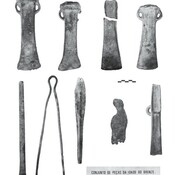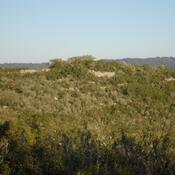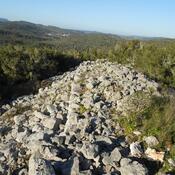Gruta do Bacelinho has a cavity of about 500 square meters, with a very high relative humidity, it has several galleries connected with two of the main rooms, joined by a small room to the north. Some of the galleries are underwater. The traces observed during the archaeological interventions allowed us to conclude that this is a cavity carved by the exploitation of ore, in which its occupation lasted from Roman times until probably medieval times. In addition to operating as a mine, the research team believes that, during the classical period, it served other functions, namely as a shelter, as evidenced by the presence of fine ceramics (sigilata) and loom elements. In this same room, hundreds of ceramic fragments of different morphological types were recovered, several fragments of glass, a lamp decorated with a medusa head and a small inscription on the base "LUCRECI", as well as a series of metal objects, of which two swords, a spear point and an iron wedge stand out. During the investigations, archaeologists also discovered three fireplaces in the cave, "which means that the cave had to have two exits", one of which will have been buried over the years.
Lage:
- Portugal, Porta
- geo:39.83585,-8.401864
- Lage ± 0-5 m.
Klassification:
- Beobachtung
- Sichtbar
Identifiers:
- vici:place=87639
Anmerkungen
Gruta do Bacelinho has a cavity of about 500 square meters, with a very high relative humidity, it has several galleries connected with two of the main rooms, joined by a small room to the north. Some of the galleries are underwater. The traces observed during the archaeological interventions allowed us to conclude that this is a cavity carved by the exploitation of ore, in which its occupation lasted from Roman times until probably medieval times. In addition to operating as a mine, the research team believes that, during the classical period, it served other functions, namely as a shelter, as evidenced by the presence of fine ceramics (sigilata) and loom elements. In this same room, hundreds of ceramic fragments of different morphological types were recovered, several fragments of glass, a lamp decorated with a medusa head and a small inscription on the base "LUCRECI", as well as a series of metal objects, of which two swords, a spear point and an iron wedge stand out. During the investigations, archaeologists also discovered three fireplaces in the cave, "which means that the cave had to have two exits", one of which will have been buried over the years.
In der Nähe
Roman Road (3 km)
Roman Road
Rominha (3 km)
Rominha
Roman Road (6 km)
Roman Road




